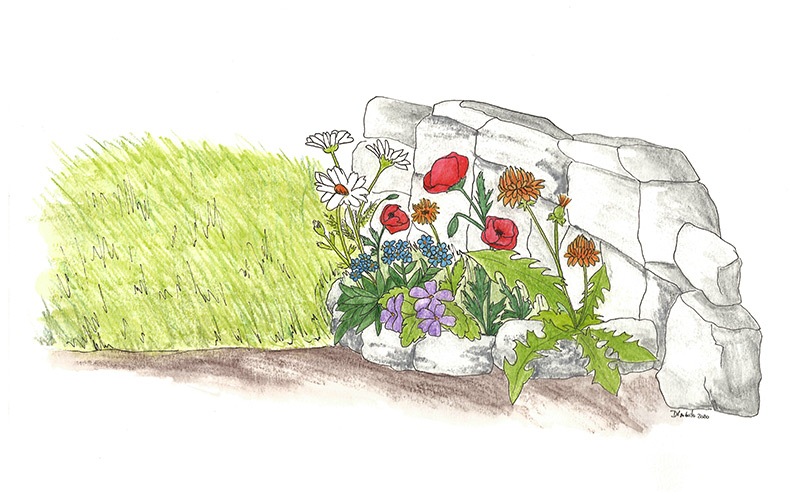Assign a part of the lawn to the spontaneous growth of the herbaceous species, and sow some autochthonous flowering species that attract pollinating insects in the other. Proceed in this way:
- Choose a sunny portion of the garden.
- Remove, in early spring, the grass already existing and scratch the soil with a rake.
- Spread the seeds and then cover them with loam.
Water slightly.
Needed equipment
- Gloves
- Wheelbarrow
- Garden hoes
- Garden rakes
- Spades
- Shovels
- Watering cans or hose for irrigation
- Seeds of native flowering varieties
Pollinators attracting species to be planted
- Vervain
- Dame's Violet
- Veronica
- Mullein
- New York aster
- Calendula
Some of the spontaneous herbaceous species to be observed
- Clovers (Trefoils)
- Common dandelion
- Nettle
- Papaver
- Cornflower
- Forget-me-nots
- Fennel
- Carrot
- Oxeye daisy
- Carduus
- Goldenrod
- Viola
- Buttercup
- Hypericum

Maintenance
Native plants require much less maintenance than the turf of an English lawn. The lawn will need a small cut (height 5-10 cm), to be done between August and September, or anyway when the plants will no longer be blooming